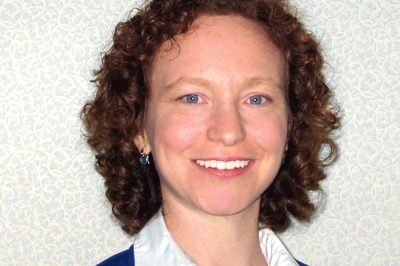October, among other things, is GLBT History Month, which makes it the perfect time to write about “Gay America: Struggle for Equality” (Amulet: 2008), by Linas Alsenas. The book is a history of gays and lesbians in the U.S. from the mid-19th century through 2005. The much-needed tome fills a gap, not because of the subject — there is a small but growing number of LGBT-specific histories — but because of its audience: teens.
LGBT histories for that age group have been sorely lacking, consisting mostly of “Becoming Visible: A Reader in Gay and Lesbian History for High School and College Students” (Alyson: 1994), by Kevin Jennings. (Yes, the same Jennings who is now heading the U.S. Department of Education’s Office of Safe and Drug-Free Schools.) Jennings’ volume is useful, but is more a source book than a narrative like “Gay America.” Both are needed.
“Gay America” is, like all general histories, more wide than deep. That is not a criticism, but rather a setting of expectations. Those wanting a thorough, academic tome complete with historiographic analysis and footnotes will be disappointed. Alsenas is a children’s book author and illustrator, not a professor, although he did study art history at Harvard. As a synthetic history, however, “Gay America” manages to pack a lot into its 160 pages, covering politics, culture, relations between the LGBT and other civil-rights movements, entertainment, the evolution of gay and lesbian identities and more.
I also like Alsenas’ technique of starting each chapter with a fictionalized scenario that represents the era in question. It reflects his background as a storyteller. For the target audience, it is a good hook, and segues nicely into the more-factual matter that follows.
Many will criticize the book for its sole focus on gays and lesbians: There are only passing references to bisexuality and the transgender community. The lack of the full spectrum is a disappointment, but at least Alsenas is up front about his scope, saying, “Since space is limited, I have focused on the histories of gays and lesbians, leaving out many of the histories of the increasingly diverse groups within the queer community whose stories are tightly woven into the same historical fabric.” One hopes another writer will step in to fill this gap. When threads are tightly woven, it distorts the pattern when some are absent.
Two further omissions stand out. Given the teen audience, I think Alsenas should have included more about the foundation of gay-straight alliances. He mentions the GSA that was banned in 1995 in Salt Lake City, Utah, but says nothing about the roots of this movement in the late 1980s at Concord Academy and Phillips Andover Academy in Massachusetts.
There is also nothing in the book about gay and lesbian people raising children. Given the teen audience, one might argue that they are not yet interested in childrearing; on the other hand, the children of gay and lesbian parents, who are among the direct inheritors of this LGBT history, may read the book and wonder why they don’t see themselves at all. One could also argue that lesbian and gay parents have played an important part in the assimilation of gays and lesbians into mainstream culture. That is an important trend and one that warrants a nod in any queer history. (Whether such mainstreaming is good or bad is a separate debate.)
I will not be picky about some of the small things Alsenas left out. As an erstwhile historian, I think it is important to recognize both the need for surveys and their limitations. Many readers are bound to feel he omitted their favorite historical personage or event. The question becomes which ones are essential to the narrative. It is usually fruitless to be too fussy about which persons or examples were chosen to illustrate a particular trend, if the goal is mainly to engage readers in the subject and whet their appetites for more. Alsenas does both well.
Parents and teachers may wish to recommend this primarily for the older teen set. There are some tame, non-descriptive references to the sexual revolution, sodomy laws and how HIV/AIDS spreads through sexual contact. Middle-schoolers, too, may find the historical content of interest, but their parents should be prepared to answer questions about the few vague — but, to a young teen, tantalizing — references to sexual matters. They are hardly the heart of the book, though. The oldest teens may find their appetites for LGBT history whetted enough that they will move on to some of the “grown-up” histories recommended in the back, such as Lillian Faderman’s “Odd Girls and Twilight Lovers” or Neil Miller’s “Out of the Past.”
Even for grown ups, however, “Gay America” is a well-written, if high-level, picture of gay and lesbian history that may teach those of us with little prior knowledge a thing or two about our cultural forebears. With a beautiful rainbow cover and filled with photographs, it would also make a lovely coffee-table book, but it should get off the table every once in a while to be read. At less than $20, it would also make a wonderful gift, or a donation to a local school or library.
Philosopher George Santayana once said, “Those who cannot remember the past are condemned to repeat it.” Helping the next generation learn a little more about LGBT history may be one of the best ways we have to ensure a more equal future for us all.
Dana Rudolph is the founder and publisher of Mombian (www.mombian.com), a blog and resource directory for LGBT parents.
